-
1
Rest and Recovery
After UAE, rest and avoid strenuous activities for a week to ensure smooth and uncomplicated recovery.
ALL YOU NEED TO KNOW ABOUT UTERINE ARTERY EMBOLIZATION
Watch Dr. Mikhail C.S.S Higgins talk about Uterine Artery Embolization (UAE)
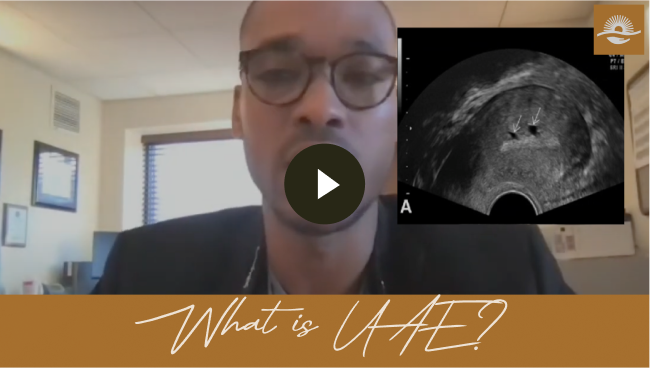
What is UAE?
Uterine Artery Embolization (UAE), also known as Uterine Fibroid Embolization, is a minimally invasive procedure used to treat Uterine Fibroids and Adenomyosis. Fibroids and Adenomyosis are non-cancerous growths that develop in the uterus.
During UAE, tiny particles are injected into the blood vessels that supply the Fibroids and Adenomyosis, blocking the blood flow to them. This causes both the Fibroids and Adenomyosis when present to die, shrink, and then fully absorb.
Uterine Artery Embolization (UAE) is typically performed by an interventional radiologist, rather than a gynecologist. Interventional radiologists are specialists who have specific training and expertise in performing minimally invasive procedures using image guidance.
Quick Facts
We understand that you may be hesitant to book a consultation or undergo a UAE procedure. Rest assured, we are here to help. Below is some key information to help give you peace of mind.
Studies show an 85% to 95% success rate in alleviating symptoms like heavy menstrual bleeding, pelvic pain and bloating.
WEEKS
Physical recovery in 1-2 weeks. Resume light activities.
MONTHS
Menstrual cycle stablizes in a few months with marked improvement in the duration and volume of menstrual bleeding.
WEEKS
Notable symptom improvement in a few weeks, including heavy menstrual bleeding, painful periods, urinary frequency & bloating.

Patients avoid expensive hospital stays, general anesthesia, scarring, and lengthy recovery.
Easy Diagnosis is Key to your Recovery.
Sources: Penn Medicine, Cleveland Clinic, USA Fibroid Centres
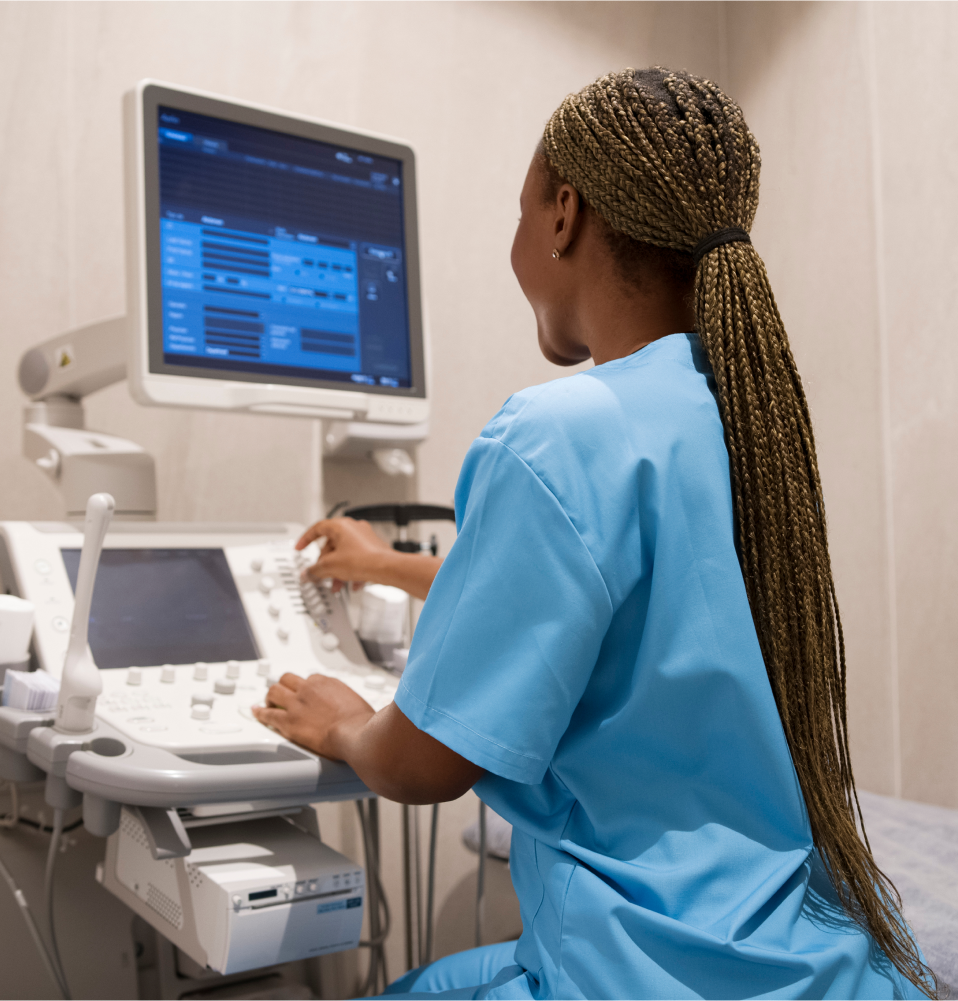
DR. MIKHAIL HIGGINS CAN Diagnose YOUR CONDITION
Expert Imaging Techniques for Accurate Detection
Diagnostic Excellence in Interventional Radiology
Interventional Radiology plays a pivotal role in diagnosing and treating Uterine Fibroids and Adenomyosis. This specialized field combines high-quality diagnostic imaging with minimally invasive techniques, enabling physicians to employ state-of-the-art scans to accurately identify and assess these conditions. Such detailed imaging is crucial for developing the best plan of action for executing on the Uterine Artery Embolization (UAE) procedures.
Effective Treatment with UAE
By embolizing the arteries that supply the Fibroids and Adenomyosis, interventional radiologists are able to kill these growths and in turn alleviate symptoms such as heavy menstrual bleeding, painful periods and bloating. This minimally invasive treatment provides a safe and effective alternative to conventional surgery that prioritizes a precise and targeted treatment, reducing the need for invasive surgical interventions.
Advancing Medical Practice
This advanced technique is a key aspect of the movement toward innovative, less invasive treatments that enhance patient outcomes while dramatically shortening recovery times. It’s become recently available for the first time in The Bahamas and The Caribbean at The Bahamas Fibroid & Interventional Clinic at the Family Medical Center. UAE marks a significant development in medical practice, delivering high-quality care that utilizes cutting-edge technology while embodying holistic and modern treatment philosophies. This approach not only reduces physical pain but also highlights the transformative potential of interventional radiology in effectively managing complex medical conditions from the inside out.
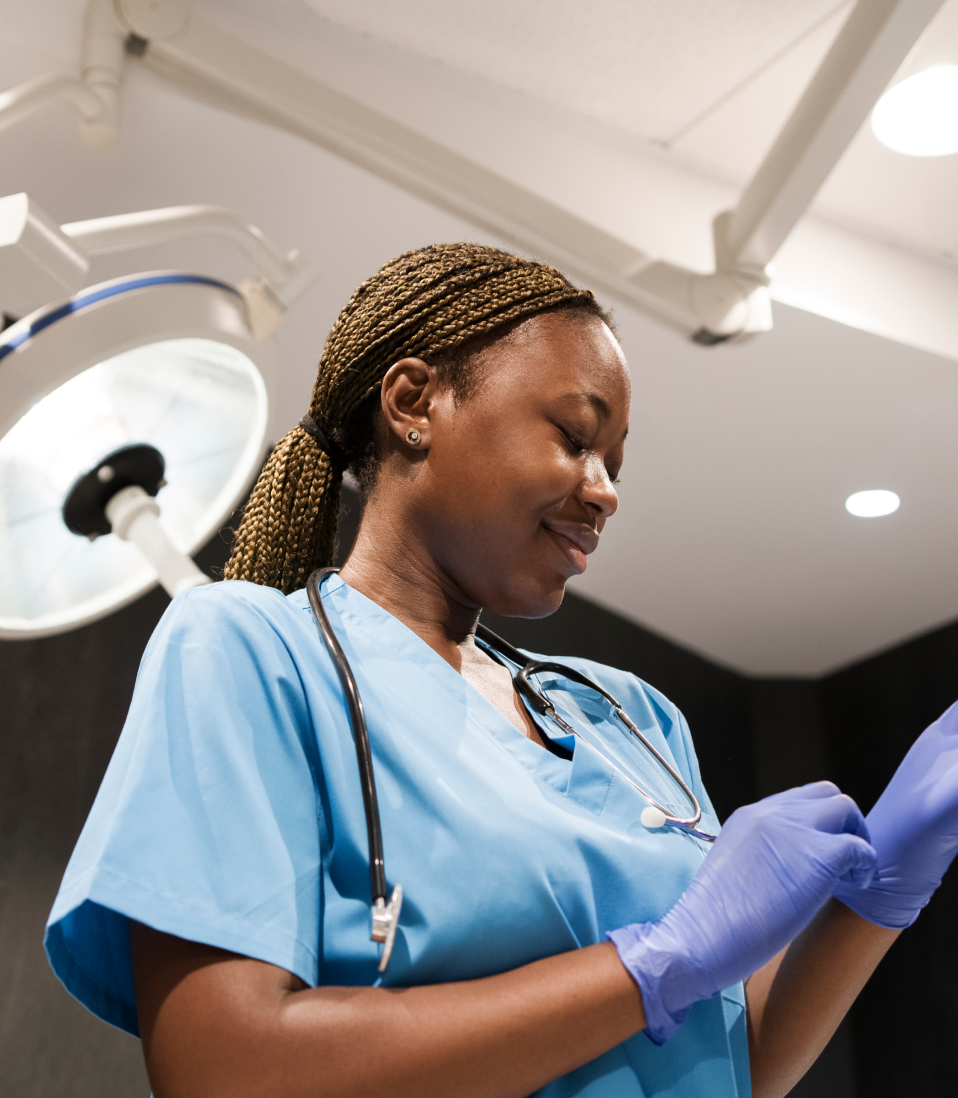
A NEW INNOVATIVE NON-INVASIVE TREATMENT
Uterine Artery Embolization (UAE)
Effective, Holistic Fibroid Treatment Options for Women everywhere.
Dr Higgins’ minimally invasive procedures utilize advanced imaging techniques to support the effective treatment of conditions such as Uterine Fibroids and Adenomyosis without the need for traditional surgery, offering patients optimal relief with minimal discomfort and recovery time.
These state-of-the-art interventions prioritize patient safety and health outcomes. Dr. Higgins brings innovative solutions to common yet challenging conditions, emphasizing a patient-centered approach that minimizes discomfort and recovery time.
These state-of-the-art interventions prioritize patient safety and health outcomes. Dr. Higgins brings innovative solutions to common yet challenging conditions, emphasizing a patient-centered approach that minimizes discomfort and recovery time.
Uterine Artery Embolization (UAE) can be a good option for a woman with Uterine Fibroids for several reasons:
- Non-surgical approach: UAE is a minimally invasive procedure that doesn’t involve surgery, reducing the risks associated with traditional surgery.
- Preserving the uterus: UAE aims to shrink the Fibroids by cutting off their blood supply, preserving the uterus and its functionality.
- Shorter recovery time: Compared to surgery, UAE generally has a shorter recovery period, generally one week, allowing individuals to return to their daily activities sooner.
- Reduced symptoms: UAE can help alleviate symptoms associated with Fibroids, such as heavy menstrual bleeding, pelvic pain, and pressure.
- Little to no scarring: Involves a tiny incision the size of a grain of rice, resulting in minimal scarring compared to surgery.
- Option for those who want to avoid hysterectomy: For individuals who wish to eliminate their Fibroids and Adenomyosis, UAE can be a highly desirable alternative to hysterectomy.
WHAT SHOULD YOU DO FOR POST-PROCEDURE CARE?
Essential Post-Procedure Care Tips After UAE


-
2
POST-EMBOLIZATION SYMPTOM MANAGEMENT
It is normal to develop the post-embolization syndrome which includes pain, nausea, and a low grade fever. Follow Dr Higgins’ instructions for symptom management by taking prescribed medications as directed to control discomfort.

-
3
Follow-Up Appointments
Attend all follow-up appointments to monitor and to ensure successful recovery, assess the treatment benefits of the UAE procedure and to gauge resolution of all pre- and post-procedure symptoms.
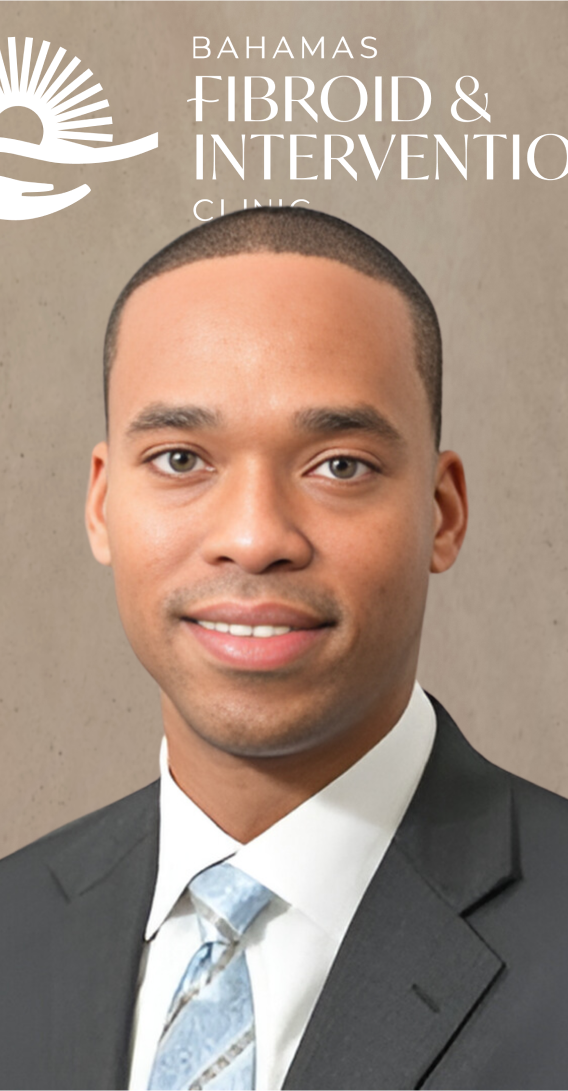
MEET YOUR LEADING INTERVENTIONAL RADIOLOGIST
Dr.Mikhail Higgins
“Uterine Fibroids are a major epidemic in The Bahamas and The Caribbean, hindering women from being the best version of themselves. My goal is to empower women with the knowledge of all treatment options and to increase their access to a uterine-sparing, minimally-invasive, nonsurgical holistic treatment, not previously available in our region. Our women simply deserve better.”
Educational Achievements: Dr. Mikhail C.S.S. Higgins earned his bachelor’s degree with Honors from Macalester College and an MD with Distinction from Wake Forest University School of Medicine. He completed an MPH focusing on Health Care Policy and Administration at Yale University and concluded his medical training with a residency and fellowship in Interventional Radiology at prestigious institutions including the Hospital of the University of Pennsylvania and the University of Virginia Medical Center.
Professional Expertise: Dr. Higgins is known for his skill in minimally invasive procedures, covering areas such as women’s health, vascular interventions, and treatments for liver and renal tumors. Dr. Higgins was inducted into the Clinical Excellence Society by the Boston University Medical Group and Dr. Higgins is the current Chair of the Interventional Radiology Expert Panel 2 for the America College of Radiology’s Appropriateness Criteria.
Community and Wellness Engagement: A strong advocate for diversity and inclusion, Dr. Higgins co-founded the UPHS-CHOP Alliance of Minority Physicians. He has served as the Chair of the Society of Interventional Radiology’s Diversity, Equity, and Inclusion Advancement Coalition. His community involvement extends to mentoring underrepresented students and medical trainees, and sharing his expertise as a yoga instructor and performance coach for athletes, and other high performance professionals, demonstrating a holistic approach to health, wellness and leadership.
Bringing New Medical Techniques to The Bahamas
and The Caribbean:
Dr. Mikhail Higgins is the first board-certified fellowship-trained Interventional Radiologist in The Bahamas. Through his collaboration with Family Medicine Center, Dr. Higgins brings new innovative medical techniques to The Bahamas and The Caribbean.
Dr. Mikhail Higgins: A Pioneer in Minimally Invasive Fibroid Treatment
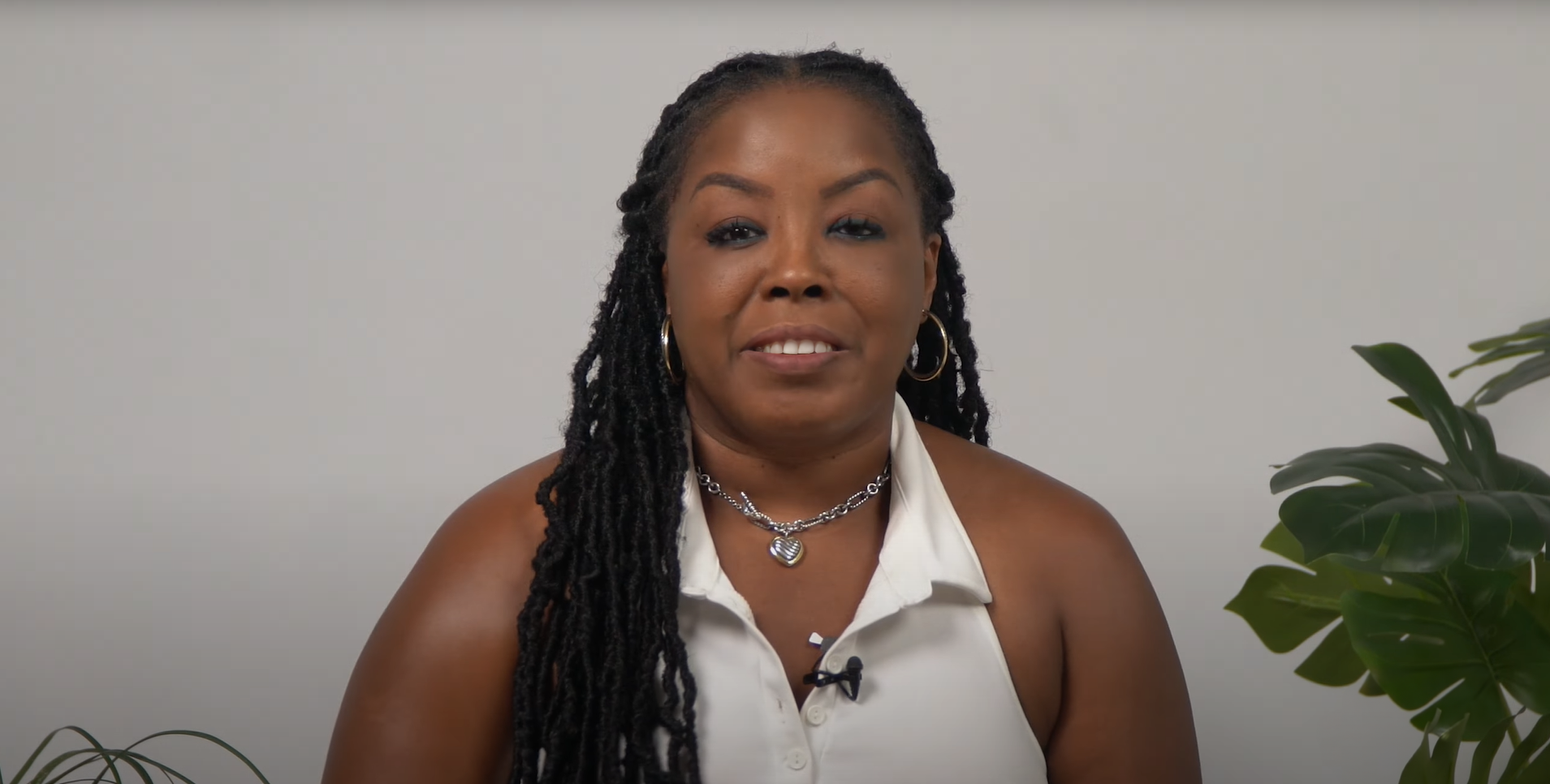
Chegera Pople

Michelle Sands
Nassau, The Bahamas
“Before visiting Dr. Higgins, I suffered for over 10 years with uterine Fibroids, experiencing severe cramps, heavy bleeding, stomach pains, and anemia. After a referral and consultation, Dr. Higgins recommended Bilateral Uterine Artery Embolization—a procedure that doesn’t require surgical incisions and offers a quick two-week recovery. The procedure went smoothly, and by the second week, I was already feeling fantastic. Six months later, my energy levels soared, and my periods became notably lighter, transforming my quality of life. I am immensely grateful to Dr. Higgins and his team for their exceptional care and support. Thank you for changing my life.”

Shaniska Hanna
Nassau, The Bahamas
“Battling Fibroids since 23, I faced worsening symptoms over the years. Initially advised to undergo a hysterectomy, I sought natural remedies and later, a myomectomy, which provided temporary relief. The symptoms returned, leading me to Dr. Mikhail Higgins in Nassau for a minimally invasive procedure, despite skepticism from my gynecologist. In my forties, post-procedure, my life has transformed: no more heavy bleeding or painful periods. I advocate for this treatment, highlighting my journey to freedom.”

Rochelle Moss
Nassau, The Bahamas
“In 2023, I endured excruciating stomach pain leading to a gallbladder removal and a fibroid diagnosis. After consulting with doctors, I underwent a less invasive Uterine Fibroid Embolization by Dr. Mikhail Higgins, addressing symptoms like heavy periods and bloating. The procedure significantly improved my quality of life, including lighter periods and reduced pain. I strongly recommend this treatment for fibroid sufferers, emphasizing the importance of following post-operative instructions for optimal recovery.”

Keeshan Fowler
Nassau, The Bahamas
“In December 2022, I had a Uterine Artery Embolization by Dr. Mikhail Higgins, a compassionate expert. His care and thoroughness throughout made the experience comforting. The procedure, enhancing convenience by being local, led to significant health improvements—easier periods, less cramping, and a smaller waist. Grateful for the life-changing results, I highly recommend Dr. Higgins for Fibroid issues and aim to raise awareness to help others.”

Asia Saunders
Nassau, The Bahamas
“Facing worsening Fibroids and severe discomfort, I sought treatment to avoid scarring from traditional surgery. In The Bahamas, Dr. Higgins offered an alternative solution, providing professional, empathetic care and a virtually scarless outcome. This transformative experience from consultation to recovery led to a significant improvement in my quality of life. Dr. Higgins is highly recommended for his ability to listen, understand, and deliver outstanding clinical results.”

Tamisha Knowles
Nassau, The Bahamas
“Thank you to Dr. Higgins and the entire team. To God be all the Glory. To all the women that will read this, I just want to encourage you to call Dr. Higgins at Family Medicine Center today and book a consultation. I promise you it will change your life forever. I did not have to get a hysterectomy that would have triggered early menopause.”
Get Started on Your Path to Wellness.

Understanding Uterine Artery Embolization
We’ve got all the information you need to know (UAE)
Generally, UAE has a high success rate in providing symptom relief for women with uterine Fibroids. Studies have reported success rates ranging from 85% to 95% in terms of reducing symptoms such as heavy menstrual bleeding, painful periods, abdominopelvic bloating and increased urinary frequency and urgency.
Source: http://mountsinai.org
Post-UAE, most women continue to have periods, but they are often less heavy and less painful, notably improving their quality of life.
The risks of UAE are minimal. Like any procedure, it bears a very low risk of infection, access site bleeding or secondary amenorrhea (cessation of periods). Discuss with your interventional radiologist for a detailed risk assessment.
General anesthesia is not typically required for UAE; it is usually performed under local and regional anesthesia, as well as moderate (conscious) sedation.
Patients may experience mild to moderate discomfort during and after UAE. In the immediate post procedural period, cramping is expected and is reliably managed with a standard pain medication regimen including anti-inflammatory and analgesic medications.
Our patients are typically admitted for one night for observation and management of their immediate post embolization symptoms which includes abdominal cramping, fatigue and less frequently nausea. Patients are discharged the following morning home for one week of restful recovery.
It’s advisable to wait about 2 weeks after UAE before resuming sexual activities. This is to further reduce the low risk of infection post treatment and to ensure optimal recovery in the immediate post procedure period.
UAE is a procedure invented and performed exclusively by an interventional radiologist, not a gynecologist.
Follow-up care typically includes visits with your interventional radiologist to assess healing and symptom improvement.
The vast majority of women return to normal activities within the second and third week post-UAE. However, recovery times can vary based on individual health conditions.
Many women with Fibroids have impaired fertility due to the compressive effects of the Fibroids on the fallopian tube resulting in impairing ovulation and conception or the growing embryo resulting in miscarriages. UAE can reduce and eliminate these harmful compressive effects, thereby improving the chances for a woman who is able to conceive to bring her child to term. Discuss potential risks and benefits with your interventional radiologist if you plan to conceive in the near future.
There’s no limit to the number or size of Fibroids that can be successfully treated with UAE.
Given that women with Fibroids have a genetic predisposition, when fully and successfully treated, Fibroids grow back typically in 8 – 15 years. A diet rich in alkaline foods as well as exercise helps to prevent and reduce the rate of symptomatic regrowth.

